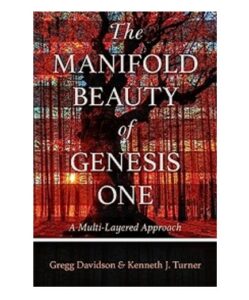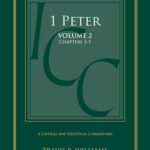Layers in the Creation Account? A Review of Davidson and Turner
Studies of the creation account in Genesis 1 show no sign of abatement. A recent addition to the literature by Gregg Davidson and Kenneth Turner proposes a middle way between proponents of young-earth creationism and old-earth approaches (The Manifold Beauty of Genesis One: A Multi-Layered Approach [Grand Rapids: Kregel, 2021]). Gregg Davidson is the chair of the geology department at the University of Mississippi, while Kenneth Turner is the professor of Old Testament at Toccoa Falls College. Putting together a geology professor with an Old Testament professor offers a clue as to the authors’ perspective on the earth’s origins. It’s no surprise, then, that endorsements come from old-earth OT scholars such as Tremper Longman III, John Walton, and C. John Collins. Davidson and Turner contend that Genesis 1 constitutes “theologically rich literature” providing multiple layers of perspective on God’s work of creation. Divine creation, they suggest, is narrated through seven interpretive lenses that include song, analogy, polemic, covenant, temple, calendar, and land.
The authors begin by expressing their regret over the “acrimony” and “conflict” that too often characterize discussions of origins (3). They suggest that “much of this conflict derives from a failure to fully embrace what the church has long affirmed about the nature of the Bible as a whole,” namely, that Scripture is multi-dimensional and open to a variety of interpretive conclusions (3–4). This early claim strikes the reader as somewhat disingenuous given the consistency of Jewish and Christian interpretations throughout history as to the meaning of Genesis 1–2. Their assertion that because some parts of Scripture admit of multiple interpretations therefore any part of Scripture must be open to multiple interpretations is the fallacy of composition, which often leads to hasty generalizations (cf. Robert Gula, Nonsense: A Handbook of Logical Fallacies, 85).
They propose that the Bible presents “layers of truth” that allow multiple perspectives as simultaneously valid (4). The original cultural context of Scripture must be held supreme (7–8). Any concerns, they conclude, that their work undermines the perspicuity, authority, and inerrancy of Scripture miss the mark, as they claim that their approach is “free of any obligations or deference to science” (12).
The first chapter offers ways in which Genesis 1 might offer multiple perspectives, using the analogy of genealogy. Biblical genealogies seem to be “a plain and straightforward documentation of history” (15) but in fact, carry rich literary devices and theological nuances. In the same way, they contend, Genesis 1 carries a number of anomalies that point to “something more than a straightforward (literalistic) reading” (22).
The next seven chapters deal consecutively with the interpretive lenses mentioned above. The authors make a case for their reading and then answer potential objections. The first layer is song. The authors contend that due to the literary framework and parallelism evident in Genesis 1, the creation account is best read as a liturgy, hymn, or song (33). Such an approach, they claim, does not dismiss the text’s historical claims but nuances them to allow for figural readings. The second layer is analogy. The authors argue that biblical typology, including Paul’s alleged allegorization in Galatians 4 of the Sarah and Hagar narrative, provides precedent for understanding the creation narrative as typical. Here they focus on the Sabbath rest as a hermeneutical key: God didn’t actually need to rest so this is a clue to deeper significance (47–50). The third layer is polemic. Davidson and Turner argue that Genesis 1 serves as a polemic against Egyptian, Babylonian, and Canaanite creation mythologies. These polemical elements underscore the eternality and supremacy of Yahweh as compared with the gods of the ancient Near East (65–72).
The fourth layer is covenant. The authors argue for a creation covenant or Edenic covenant as integral to the opening Genesis narrative. Part of their argument in this chapter—and this point is crucial for an old-earth origin model—is that, due to this original covenant, the nature of the earth did not substantively change as a result of the sin-curse. There were earthquakes, storms, floods, diseases, pests, and even death from the inception of creation: “Nature did not change. Rather, people’s experience with nature was transformed from something positive to something negative” (90). The fifth layer is temple. Here the authors tap into the popular themes of temple and cosmology motifs in creation, correlations advanced by scholars such as Gordon Wenham and T. D. Alexander. In this construal, creation provided a sanctuary for God to dwell in as evident in the many parallels to the tabernacle/temple.
The sixth layer is calendar. Davidson and Turner argue that God’s act of creation constituted times, seasons, and festivals. Thus, creation holds a liturgical paradigm for humanity. The seventh and final layer is land. The authors draw here upon the work of John Sailhamer to argue that creation prepared a land for people to inhabit, cultivate, and populate. The garden of Eden was to extend to the ends of the earth, and Adam, as Israel, was to serve as a king-priest extending God’s reign. The last chapter is a conclusion in which the authors summarize their main points, tying each of their lenses to some aspect of God’s (and Christ’s) character.
The strengths and weaknesses of the book are several. The authors write engagingly and accessibly, providing a popular-level introduction to scholarly discussions about a variety of themes in creation. Several corollaries mentioned seem plausible and helpful, such as the chapters explaining temple imagery in creation (although this is perhaps better nuanced in opposite terms: the temple reprises creation rather than the converse) and the one highlighting liturgical seasons as marked out by creation.
In spite of these strengths, however, several weaknesses merit mention. First, despite the authors’ many claims that the book is not an attempt to harmonize the biblical text with modern science, in the end this seems to be precisely what they are aiming for. Often those who deplore verbal acrimony the loudest are those pushing for a minority position. Such calls for a truce are a red herring. Would the original audience have conceived of the meaning of Genesis 1 in the way these authors suggest without awareness of modern scientific theories? Second, the book creates a false dilemma. If themes such as time, sanctuary, or kingdom are present in Genesis 1, does this mean that the narrative cannot or does not also present the events as straightforward history? If we see these themes in the text, must we also espouse a figurative reading of the creation? Genesis 1 presents straightforward, normative history but also sets a trajectory for biblical-theological themes that find development across the canon of Scripture.
Third, some of the lenses are not persuasive as legitimate themes in Genesis 1–2. For example, Steven Boyd has conclusively proved elsewhere that the opening chapters of Genesis bear the marks of normal Hebrew prose and should not be interpreted as poetry or song (see Boyd, “The Genre of Genesis 1:1–2:3: What Means This Text?” in Coming to Grips with Genesis, 163–92). Also, it is unlikely that the opening chapters of Genesis establish a covenant with creation. Was a divine covenant necessary before the advent of human sin? Moreover, positing the presence of death before the fall runs contrary to the entire train of Scripture (e.g., Ezek 18:4; Rom 5:12; 6:16, 23; 8:19–21; 1 Cor 15:21–22; Jas 1:15). In the end, this book will likely appeal to readers who are eager for writings that confirm their already-held views on the earth’s age. The discerning reader may benefit from some of the discussions, as long as he or she keeps a critical eye toward some of the claims made.



